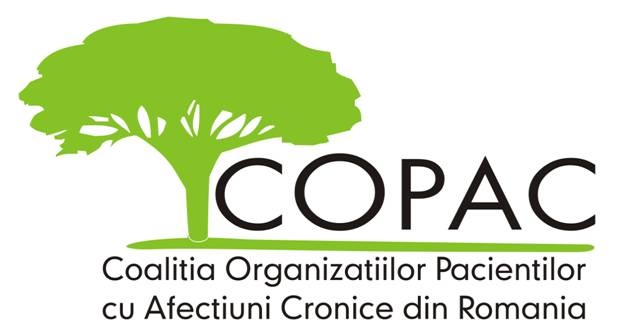ACP WGN01 (MONTREAL 2023 MAY 2003 WP13 PAGE 2
ACP WGN01 (MONTREAL 2023 MAY 2003 WP13 PAGE 2ACP WGN01WP 11 AMCP – 070104 AERONAUTICAL COMMUNICATIONS PANEL
WGN01WP12 AERONATICAL MOBILE COMMUNICATIONS PANEL (AMCP) WORKING GROUP N
Procedural security planning
ACP
WGN/01 (Montreal, 20-23 May 2003
WP-13
Page
Aeronautical Communications Panel (ACP)
Working Group N
Montreal,
Canada
20-23 May 2003
Agenda Item: 3.3 Security Work Plan
Procedural Security Planning
Presented
by
Alvin H. Burgemeister
B-twelve Associates, Inc.
Summary
The work of defining the technical details for ATN security is a small part of the total effort required to implement secure ATN. The much larger task involves the procedural and institutional issues of key management and governmental approval. Although some of these items are outside the scope of ACP, it is necessary for this Panel to clearly define the requirements so the appropriate bodies can proceed with their work to enable secure ATN.
Introduction
A security expert has pointed out that communications security is 90% procedural and 10% technical. The Security SubGroup of the ATN Panel has done a lot of good work defining the technical provisions for ATN security. If ATN security is to be implemented, however, significant progress has to be made to solve the procedural and institutional issues of security.
Key Management
The Security Subgroup has begun work in this area, with a communiqué to the AEEC requesting consideration by the airlines of the subject of key administration for individual aircraft. Unfortunately, the people most involved with the aircraft—the avionics and maintenance engineers—do not have the expertise to speak knowledgably about key management for aircraft. The Information Technology (IT) people, on the other hand, are not used to thinking about the impact of aircraft communications on airline enterprise security. Continual dialog with the airline operators will be necessary to derive meaningful procedures in this area.
In some ways, airlines present the easiest part of a multi-part problem set. Business aircraft, which often operate in the same airspace, represent a number of different forms of relationship between the owner’s IT department and the flight department. Individually-owned aircraft represent yet another set of problems to be addressed. Airline, business, and individual aircraft ownership do not represent discrete groups but rather indicate broad classes in a continuous spectrum of management sophistication. State aircraft operators, whether they are military or other government agencies or even contractors to the government, are another class to be considered when defining key management procedures. All of these operators need to incorporate procedures for not only their aircraft but also their ground systems that communicate with the aircraft and with ATC.
Air traffic service organizations obviously have to manage the keys involved with air traffic communications. Although this is understood, it is not nearly so obvious how key management is to be propagated throughout the affected control facilities of an air traffic service organization. More important to the work of ICAO is the necessity for coordination of key management between adjacent States and Regions. Failure to coordinate on the ground may cause a failure to communicate with the aircraft above.
Governmental Acceptance of Encryption
Governmental views on security provisions vary widely from State to State and, thanks to the growing influence of the Internet, are changing rapidly. Many States mandate encryption if names of people are to be transmitted over a data link. Many States, on the other hand, require that traffic be transmitted un-encrypted or that government agencies be provided with the encryption keys, to allow governmental monitoring of any traffic. ATC message traffic, to be authenticated, must at least include encrypted header information. Dialog needs to begin immediately with the appropriate government agencies in each member State, with the goal of defining a consistent worldwide set of security standards that will allow ATN to function.
Conclusions
A fully-developed set of security specifications in ICAO manuals will, if the security expert is correct, reflect only 10% of the work required to enable secure ATN communications.
The meeting is invited to consider ways to develop procedures to support ATN security implementation, to identify institutional issues that must be addressed by other ICAO entities, and to communicate a clear set of guidelines to enable security procedural development for member States and organizations.
- SADISOPSG10WP4 APPENDIX A APPENDIX A SADIS ANNEX 1 AUTOMATED
- NSTITUCIÓN EDUCATIVA VICENA SAMPER MADRID ZIPAQUIRÁ COMUNICACIÓN DOCENTE LEONOR
- 4 LEVELS OF MEASUREMENT DEFINITION OF SAMPLING ERROR DEFINITION
- CLASE 16 EL SUJETO Y EL OTRO LA ALIENACIÓN
- JUEVES 19 DE FEBRERO DE 2015 DIARIO OFICIAL (CUARTA
- IRM HB 50901HB2 FEBRUARY 18 1997 VBA IRM HANDBOOK
- I INFORMACION LEGAL DE LA EMPRESA AUTOGESTIONADA FECHA 1
- STATE OF ALABAMA ST CLAIR COUNTY A WORK SESSION
- ACUERDO NÚMERO CIENTO OCHO DOS MIL DIECISÉIS (1082016)
- Radioactive Contamination Exclusion Clausephysical Damagedirect This Policy Does not
- PAGE 9 OF 9 MARISOL VENTRICE AND THE DEPARTMENT
- PROGRAMA ANALITICO CARRERA ARQUITECTURA Y URBANISMO MATERIA GEOMETRIA DESCRIPTIVA
- ORGANIZACJA PRACY WYDZIAŁU ŚRODOWISKA I ROLNICTWA ODDZIAŁ ŚRODOWISKA I
- INFANTILES SISTEMA DE COMPETICIÓN INFANTIL 1ª FASE CLASIFICATORIAGRUPO ÚNICO
- AGENDA BADAWCZA TWORZENIE I ROZWÓJ CENTRÓW WSPARCIA BADAŃ KLINICZNYCH
- 0(1) RUTINER OCH ANVISNINGAR FÖR ANVÄNDNING AV SKOLANS CYKLAR
- BIBLIOGRAFÍA ORIENTATIVA COMUNITARIA MARTÍN ZURRO CANO PÉREZ &GENÉBADIA
- BORN TO BE ECO – WARSZTATY FILMOWE DLA MŁODZIEŻY
- S BUDAPEST FŐVÁROS II KERÜLETI ÖNKORMÁNYZAT KÉPVISELŐTESTÜLETÉNEK POLGÁRMESTERI HIVATALA
- APRIL 2004 INHOUD RSZAANGIFTE VOOR KWARTAAL 12004
- 2004 AÑO DE LA ANTÁRTIDA ARGENTINA MINISTERIO DE
- USULAN PENYEMPURNAAN PASCA RDPU RANCANGAN UNDANGUNDANG REPUBLIK INDONESIA NOMOR
- 2416-articulo_10_segunda_votacion_y_firmeza_de_la_modificacion_articulo_53_del_estatuto_organico
- EZEKIEL TEXT 1 • 1 SA IKALIMANG ARAW NG
- A CONTINUACIÓN LLENA EN EL RECUADRO CORRESPONDIENTE UTILIZANDO SÓLO
- …………………………… AKCEPTUJĘ REGULAMIN KONKURSU DOTACJI HUMAN SMART CITIES INTELIGENTNE
- MYLA 2021 REVISED 372019 ALL OFFICIALS MUST GO ONLINE
- OCR GCSE PE MOVEMENT ANALYSIS EXAM PAPER ONE –
- LEY 11996 DE 3 DE ABRIL DE GESTIÓN DE
- HELPLINE MANAGER JOB DESCRIPTION AND COMPETENCIES MANAGER
ZAŁĄCZNIK NR 1 DO REGULAMINU ORGANIZACYJNEGO ŻŁOBKA MIEJSKIEGO NR
SYLABUS DOTYCZY CYKLU KSZTAŁCENIA 20202021 ROK AKADEMICKI 20202021 1
 EXPTE 755712 REGISTRADO EL 011012 A LAS 2030 HS
EXPTE 755712 REGISTRADO EL 011012 A LAS 2030 HSTREATMENT EVALUATION WORKSHEET CHILD THE PURPOSES OF THE
 РЕСПУБЛИКА КРЫМ АДМИНИСТРАЦИЯ ДЖАНКОЙСКОГО РАЙОНА АДМIНIСТРАЦIЯ ДЖАНКОЙСЬКОГО РАЙОНУ РЕСПУБЛІКИ
РЕСПУБЛИКА КРЫМ АДМИНИСТРАЦИЯ ДЖАНКОЙСКОГО РАЙОНА АДМIНIСТРАЦIЯ ДЖАНКОЙСЬКОГО РАЙОНУ РЕСПУБЛІКИAPPENDIX B STAINS USEFUL IN STUDYING RHIZOBIA 1
SVEUČILIŠTE U ZADRU ODJEL ZA GEOGRAFIJU TERENSKA NASTAVA 2
 IMPACT ASSESSMENT RECORD S CIENTIFIC NAME ERICA LUSITANICA RUDOLPHI
IMPACT ASSESSMENT RECORD S CIENTIFIC NAME ERICA LUSITANICA RUDOLPHI G ENERAL REQUIREMENTS FOR MECHANICAL REFRIGERATION SYSTEMS
G ENERAL REQUIREMENTS FOR MECHANICAL REFRIGERATION SYSTEMS  ROSKILDE LÆRERFORENING MØLLEHUSVEJ 8 – 4000 ROSKILDE ANSVARS OG
ROSKILDE LÆRERFORENING MØLLEHUSVEJ 8 – 4000 ROSKILDE ANSVARS OGICPC SENDING STATE PRIORITY HOME STUDY REQUEST USE OF
 MOCIÓ PER A LA SUFICIÈNCIA FINANCERA DELS ENS LOCALS
MOCIÓ PER A LA SUFICIÈNCIA FINANCERA DELS ENS LOCALS VYPRACOVAL LUKÁŠ HORČÍK DATUM 1532000 STUDIJNÍ SKUPINA 11
VYPRACOVAL LUKÁŠ HORČÍK DATUM 1532000 STUDIJNÍ SKUPINA 11I SAW A WOMAN IN INVERNESS WHOM I SHALL
 NR 19 27112011 CATRE MINISTERUL SANATATII IN ATENTIA DOMNULUI
NR 19 27112011 CATRE MINISTERUL SANATATII IN ATENTIA DOMNULUI LEMBAGA ADMINISTRASI NEGARA REPUBLIK INDONESIA KEPUTUSAN KETUA LEMBAGA
LEMBAGA ADMINISTRASI NEGARA REPUBLIK INDONESIA KEPUTUSAN KETUA LEMBAGA EL MONTAÑISMO COMO DEPORTE DE AVENTURA (1ª PARTE) DR
EL MONTAÑISMO COMO DEPORTE DE AVENTURA (1ª PARTE) DRAD850D IP DOME KAMERA TEKNİK ŞARTNAMESİ 1 KAMERA SENSÖRÜ
 INFORMATION CLASSIFICATION CONTROLLED AN ARMED FORCES COVENANT BETWEEN CORNWALL
INFORMATION CLASSIFICATION CONTROLLED AN ARMED FORCES COVENANT BETWEEN CORNWALL (NOTES) 1 SCOPE OF PERMISSION REQUIRED APPLICATION FOR AUTHORISATION
(NOTES) 1 SCOPE OF PERMISSION REQUIRED APPLICATION FOR AUTHORISATION